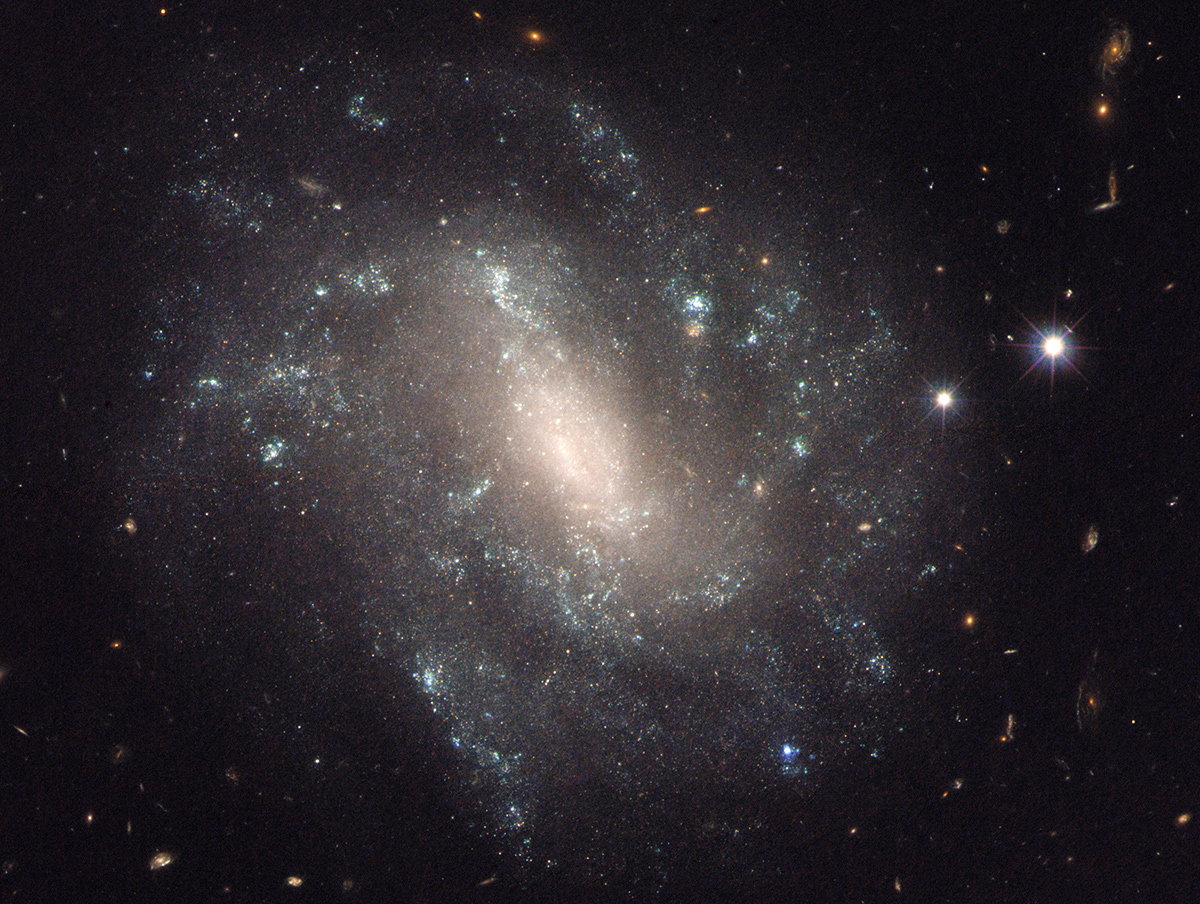We may be living in a huge void in the large-scale structure of the cosmos, scientists have said. They have shown that our galaxy and its immediate neighbours are located in an area of the universe that contains relatively few galaxies, stars and planets.
In 2013, an observational study had already suggested this, arguing that the Milky Way – and by extension our planet – resided in a very large void. These results were controversial, and not all astronomers agreed.
But research recently presented at a meeting of the American Astronomical Society, has now confirmed the findings, indicating that the void that contains the Milky Way is at least seven times as large as the average void in the universe. This in fact makes it the largest void in the universe known to science.
The scientists looked at simulations of the universe structured as a "Swiss cheese" composed of "normal matter" in the form of voids and filaments. The filaments are made up of superclusters and clusters of galaxies, which in turn are composed of stars, gas, dust and planets. The remaining 95% of the universe are made up of dark matter and dark energy.
Their analyses of these structures suggest that the Milky Way is a void that is shaped like a sphere with a shell of increasing thickness made up of galaxies, stars and other matter. This void is estimated to have a diameter of 1 billion light years.
These hypotheses are not ruled out by other observational constraints. "The new analysis shows that there are no current observational obstacles to the conclusion that the Milky Way resides in a very large void," University of Wisconsin-Madison astronomer Amy Barger said.
Expansion of the universe
The study is also interesting because it helps ease disagreements between scientists about the rate of expansion of the universe. These tensions arise because astronomers use different techniques to measure the Hubble Constant - the unit used to describe the rate at which the universe is expanding.
Most scientists use the bright light from a supernova explosion, where the distance to the galaxy that hosts the supernova is well established, to measure the accelerated expansion of the universe. Indeed, supernovas happen relatively close to the Milky Way and no matter where they explode in the observable universe, they do so with the same amount of energy, so it provides scientists with a reliable a way to measure the Hubble Constant.
However, other researchers use another technique - they look at cosmic microwave background radiation to measure the rate of expansion of the universe.
The universe is expanding at an ever-increasing rate.NASA
"Photons from the CMB encode a baby picture of the very early universe. They show us that at that stage, the universe was surprisingly homogeneous. It was a hot, dense soup of photons, electrons and protons, showing only minute temperature differences across the sky. But, in fact, those tiny temperature differences are exactly what allow us to infer the Hubble Constant through this cosmic technique," explained Ben Hoscheit, a student of Barger and the lead author of the new study.
Both methods lead to different measurements of the Hubble Constant, but by showing that the Milky Way resides in a massive void, the scientists help explain these differences.
Indeed, the matter outside the void is exerting a slightly larger gravitational pull and this affects the Hubble Constant value when scientists use the supernovae technique. However, it has no effect on the value derived from a technique that uses the CMB.
Living in a void thus resolves some of the discrepancies between techniques used to measure how fast the universe is expanding.


